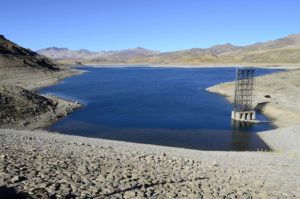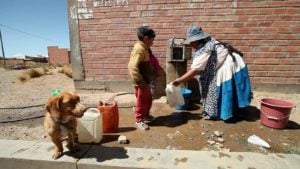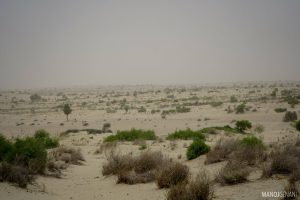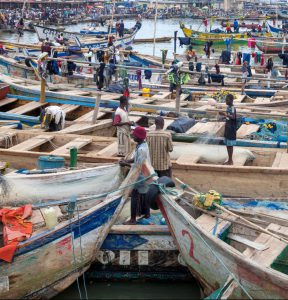One-third of the world’s land, some four billion hectares, is degraded. Half of Latin America’s agricultural land could be hit by desertification by 2050.
In India, host of a major UN summit on desertification being held on the outskirts of New Delhi from 2-13 September, known as the Conference of Parties (COP) to the UN Convention to Combat Desertification (UNCCD), degradation has hit 96 million hectares.
This equates to 29.32% of the country.
Almost all countries have signed a pledge to reach “net zero degradation” by 2030, which means restoring as much land as is degraded.
Prakash Javadekar, India’s minister for environment, forests and climate change, and president of the COP, announced recently that India would restore five million hectares of degraded land by 2030, and “ensure that there is no net loss in terms of land degradation.”
Deteriorating earth
Land degradation is worsening because of poor land management practices, such as overgrazing and deforestation, and climate change. This has wide-reaching implications for food security, migration and even conflict.
Humanity needs to better manage land to avoid a climate breakdown, a United Nations special report warned in August. Growing human pressure is degrading land globally and climate change is adding to these pressures, it said. Crucially, better land management alone will not be enough to solve the problem.
This must go hand in hand with efforts to reduce greenhouse gas emissions (GHGs) if global warming is to be restrained to below 2C, the report said.
75%
of the world's land is affected by human activity
Human activities, such as agriculture and deforestation, affect 75% of the Earth’s land surface, causing widespread degradation. The changes in land use in the past century caused as much as 23% of manmade GHGs.
In Latin America, land use change is a major source of GHGs.
Killer droughts
Former UNCCD chief Monique Barbut has pointed out that drought kills more people than all other calamities such as floods, storms, earthquakes and volcanic eruptions put together.
Ibrahim Thiaw, current head of UNCCD, is from Mauritania and knows the danger only too well.
we can turn around the lives of the over 3.2 billion people all over the world that are negatively impacted by desertification and drought, if there is political will
The Sahel, a vast area bordering Africa’s Sahara desert, is more prone to land degradation than any other part of the world. It is also the area where the UNCCD has concentrated its work since it was set up as one of the three conventions following the 1992 Earth Summit in Rio de Janeiro. The others are on climate change and biodiversity.
UNCCD meetings tend to be less contentious than those on climate change and biodiversity. Still, there have been murmurs about the focus on the Sahel. The convention secretariat has led the effort to build a “great green wall” that will combat the advance of the Sahara.
Biodiversity experts have warned of the catastrophic effects on nature of land degradation in Brazil, which has been hit by record numbers of fires.
Some countries, especially in Asia, have pointed out that they are suffering from serious land degradation too. That includes the west and north-west of China and areas such as Bundelkhand, northern Gujarat, Marathwada, Vidarbha and Telangana in India.
“We are fast running out of time to build our resilience to climate change, avoid the loss of biological diversity and valuable ecosystems and achieve all other Sustainable Development Goals,” Thiaw said.
“But we can turn around the lives of the over 3.2 billion people all over the world that are negatively impacted by desertification and drought, if there is political will. And we can revitalise ecosystems that are collapsing from a long history of land transformation and, in too many cases, unsustainable land management.”
We are fast running out of time to build our resilience to climate change, avoid the loss of biological diversity and valuable ecosystems
With India succeeding China to the COP presidency, experts expect a boost to the process of combating desertification in Asia. The first week of the COP will be taken up by informal consultations between country representatives and the European Union.
The second week starts with the High-Level Segment, where India’s prime minister, Narendra Modi, is expected to make a “big-ticket announcement”, according to officials in the environment ministry.
“We need to convert degraded land into fertile land,” Javadekar said. “This COP will work towards that through the New Delhi Declaration to be announced at the end of the conference.”
Thousands of experts and non-governmental organisations are scheduled to gather for the COP to explore how best to combat desertification – ranging from watershed restoration, to reviving streams and rivers, and choosing the breeds of cattle, goats and sheep most appropriate for degraded land.
This is an edited version of an article that was first published on India Climate Dialogue








